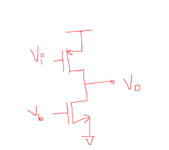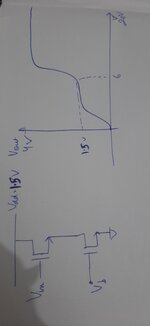Sambhav_1
Full Member level 2
Hi,
In the attached screenshot, vb is the fixed bias and vi is variable input to pmos and supply is vdd, what will happen if we sweep vi to infinite?how will the characteristic curve look like?
and what is we exchange the PMOS with nmos then how will the characteristic curve look like at vin = inf.
Thanks
In the attached screenshot, vb is the fixed bias and vi is variable input to pmos and supply is vdd, what will happen if we sweep vi to infinite?how will the characteristic curve look like?
and what is we exchange the PMOS with nmos then how will the characteristic curve look like at vin = inf.
Thanks

